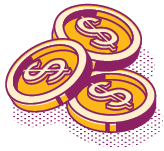Why Is There A Coin Shortage During The COVID-19 Pandemic?
Parker College of Business

The velocity of money is the rate at which money flows through the economy. If the velocity of money slows, we need more money in circulation to facilitate transactions. This is our current problem with coins. We face a coin shortage because coins are unintentionally stockpiled in our homes.
Large retailers’ self-checkout lines and hurried staffed checkout lines push us to pay with bills and receive change, meaning coins flow out of large retailers. The original self-checkout systems in Walmart had scoop-shaped coin receivers to accept volumes of coins. They were replaced by small coin slots. This discourages coin use, speeds up the lines and reduces the store’s labor intensive handling of coins. They then installed coin machines that charge a percentage to cash in coins.
This outflow of coins by large retailers is usually counter-balanced by small businesses and retail banks receiving coins, and from low-income households that readily spend coins, but all these groups are much less active due to closures, cuts in hours and loss of incomes due to
the pandemic.
The result is a coin shortage. More coins than ever are in circulation, but they move too slowly through the economy. Large retailers want the U.S. Mint to produce more coins, and for the Fed to keep coins flowing, even as large retailers themselves contribute to the problem by discouraging coin use.
How can this be resolved? First, the Federal Reserve should charge coin service fees for large coin deliveries that will encourage large retailers to take in more coins from consumers. Consumers can benefit by loading coins into the self-checkout before hitting the credit card button, or by making small purchases with coins. We can also help others by donating our coins to charities such as Feeding America through Coinstar machines. Fees are waived for the included charities.
— Richard McGrath, Ph.D., Professor, Dept. of Economics
